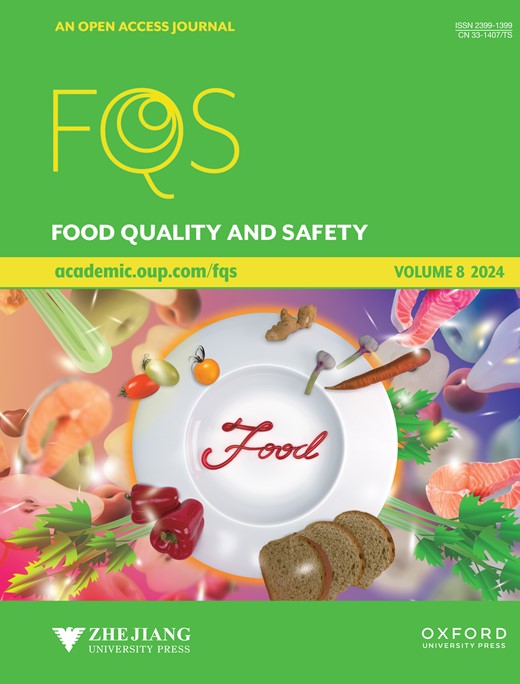Effects of homogenization and heat treatment on fatty acids in milk from five dairy species
IF 3
3区 农林科学
Q2 FOOD SCIENCE & TECHNOLOGY
引用次数: 0
Abstract
Milk fatty acids significantly contribute to human nutrition and clinical health. However, previous evidence for changes in the fatty acid profiles of different dairy species following homogenization and heat treatment is lacking. Here, changes in fat globule particle size and fatty acids in samples of Holstein, goat, buffalo, yak, and camel milk following homogenization (20 MPa) and heat treatment (63 °C for 30 min and 90 °C for 15 min) were investigated using a laser particle sizer and gas chromatography approach. The results indicated that the milk fat globule particle size of all studied dairy species significantly decreased after homogenization and heat treatment, in which there was no difference. The fatty acid composition of C10:0 and medium-chain fatty acid in goat milk, C18:0 and long-chain fatty acid in camel milk, and C16:0 in buffalo and yak milk served as the characteristic traits of these milks. Changes in the relative contents of several fatty acids (C4:0, C10:0, C16:0, C18:0, C18:1n9c, and C18:3n3) were dependent on homogenization, heat treatment, and the type of dairy species. In particular, C18:3n3 significantly decreased in goat and camel milk after homogenization and heat treatment. These findings provide new insights into how homogenization and heat treatment affect the fatty acid profile and can be used to further improve the heat treatment of milk from minor dairy species.均质化和热处理对五种乳制品中脂肪酸含量的影响
牛奶脂肪酸对人体营养和临床健康有重要贡献。然而,以前的证据表明,在不同的乳制品品种均质和热处理后,脂肪酸谱的变化是缺乏的。本文采用激光粒度仪和气相色谱法研究了荷斯坦、山羊、水牛、牦牛和骆驼奶样品在均质(20 MPa)和热处理(63°C 30 min和90°C 15 min)后脂肪球粒度和脂肪酸的变化。结果表明,经过均质和热处理后,各乳种乳脂球粒径均显著减小,但差异不显著。羊奶的脂肪酸组成为C10:0和中链脂肪酸,骆驼奶的脂肪酸组成为C18:0和长链脂肪酸,水牛和牦牛奶的脂肪酸组成为C16:0。几种脂肪酸(C4:0、C10:0、C16:0、C18:0、C18:1n9c和C18:3n3)相对含量的变化取决于均质、热处理和乳制品种类。其中,羊奶和骆驼奶经均质和热处理后,C18:3n3含量显著降低。这些发现为均匀化和热处理如何影响脂肪酸分布提供了新的见解,并可用于进一步改进来自小型乳制品的牛奶的热处理。
本文章由计算机程序翻译,如有差异,请以英文原文为准。
求助全文
约1分钟内获得全文
求助全文
来源期刊

Food Quality and Safety
FOOD SCIENCE & TECHNOLOGY-
CiteScore
7.20
自引率
1.80%
发文量
31
审稿时长
5 weeks
期刊介绍:
Food quality and safety are the main targets of investigation in food production. Therefore, reliable paths to detect, identify, quantify, characterize and monitor quality and safety issues occurring in food are of great interest.
Food Quality and Safety is an open access, international, peer-reviewed journal providing a platform to highlight emerging and innovative science and technology in the agro-food field, publishing up-to-date research in the areas of food quality and safety, food nutrition and human health. It promotes food and health equity which will consequently promote public health and combat diseases.
The journal is an effective channel of communication between food scientists, nutritionists, public health professionals, food producers, food marketers, policy makers, governmental and non-governmental agencies, and others concerned with the food safety, nutrition and public health dimensions.
The journal accepts original research articles, review papers, technical reports, case studies, conference reports, and book reviews articles.
 求助内容:
求助内容: 应助结果提醒方式:
应助结果提醒方式:


